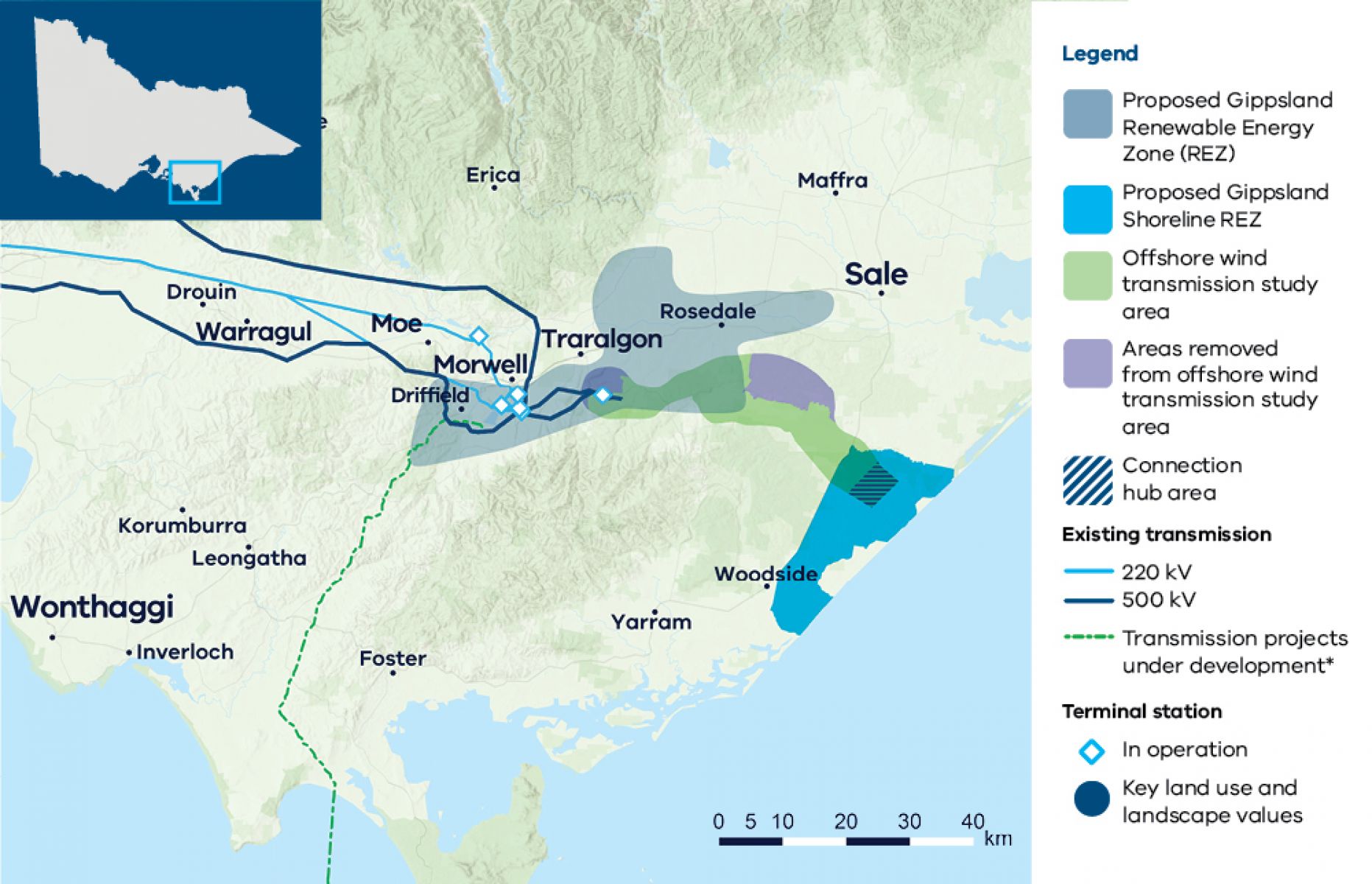On this page:
A renewable energy zone is proposed in Gippsland in between Morwell and Sale as part of the 2025 Victorian Transmission Plan.
Before being officially declared by the Minister for Energy and Resources, there will be a further chance to provide your feedback.
For more information, visit Engage Victoria.
Where is the zone?
The proposed Gippsland Renewable Energy Zone is located in between Morwell and Sale and includes parts of the local government areas of Wellington and Latrobe. Small sections of Baw Baw and South Gippsland local government areas are also in the zone.
It is within the Registered Aboriginal Party boundary of the Gunaikurnai Land and Waters Aboriginal Corporation.
We have aimed to balance complex land use issues across the region with the pressing need to position renewable energy zones with the best access to wind and solar energy.
We sought to coordinate access to existing transmission infrastructure to avoid the need to build more transmission lines for onshore renewable energy projects.

How feedback shaped the zone
Community and industry views have been crucial to the design of the 2025 Victorian Transmission Plan.
VicGrid's role is to balance the need for new renewable projects that will deliver reliable and affordable power with a range of other factors, including how we minimise impacts on landholders, communities, agriculture, the environment and power bills.
Not all community or industry requests have been adopted.
The Victorian Transmission Plan reflects difficult choices, made by weighing up many factors to deliver a plan that best serves all Victorians.
What we heard through feedback
- Preserve biodiversity and the natural environment, including the giant Gippsland earthworm, Wilsons Promontory, areas along the Bass Coast, the Strzelecki Ranges and coastal reserves and wetlands.
- Minimise impacts on agriculture, including dairy farms in South and West Gippsland, along the coast and in the Macalister Irrigation District.
- Consider South Gippsland's high dwelling density when assessing the area's suitability for wind energy projects.
- Use existing transmission infrastructure in the Latrobe Valley where possible, and underground transmission where new infrastructure is required.
- Explore co-location opportunities with plantation land.
- Avoid the airspace used by the Royal Australian Air Force (RAAF) base in East Sale.
What we did
- Worked to avoid agricultural areas, particularly dairy farms in the south and west and Macalister Irrigation District.
- We avoided areas with higher dwelling densities in South Gippsland.
- We avoided the habitat of the giant earthworm.
- We sought to protect significant landscapes along the Bass Coast, Wilsons Promontory, the Strzelecki Ranges, coastal reserves and wetlands.
- We located the proposed renewable energy zone near the existing 500 kilovolt (kV) transmission network around Loy Yang.
- We included some freehold plantation land.
- We considered options to expand the proposed zone further east and south-east, including further use of plantation land. However, these options were not progressed due to complexities with the proximity to the nearby RAAF base and low-flying aircraft, as well as potential impacts on biodiversity and cultural heritage in nearby parks.
To find out more, read the 2025 Victorian Transport Plan Gippsland summary.
Next steps
Communities within proposed renewable energy zones can continue to provide feedback and seek more information about renewable energy zones, including through face-to-face meetings with VicGrid.
We will invite formal feedback about the proposed Gippsland Renewable Energy Zone as part of the official declaration process.
There will be 6 weeks of consultation which will give landholders, communities and Traditional Owners another opportunity to provide feedback and shape decision-making. The timing for this will be announced in the coming weeks.
To stay up to date, subscribe to our newsletter.
Call us on 1800 418 341 or email vicgrid@deeca.vic.gov.au
Page last updated: 17/08/25
